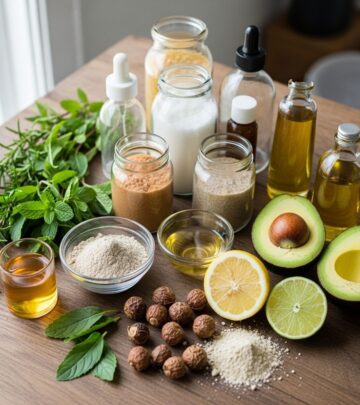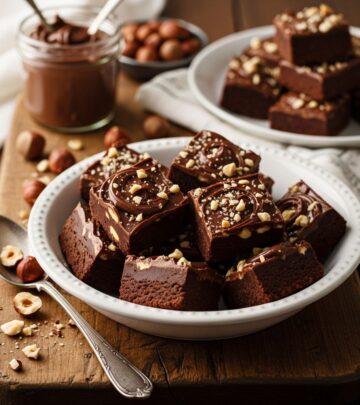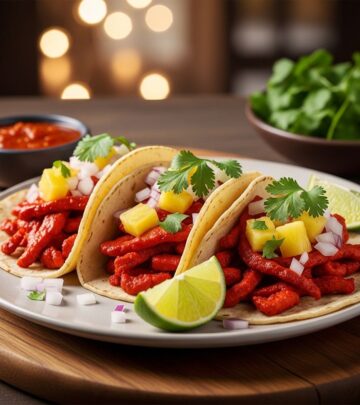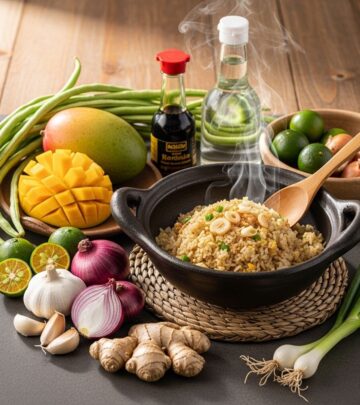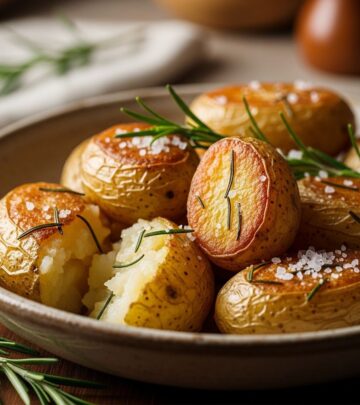Traditional Gyro Meat Recipe: 7 Steps To Authentic Greek Flavor
Savor rich Mediterranean flavors with easy steps to perfect homemade deliciousness.
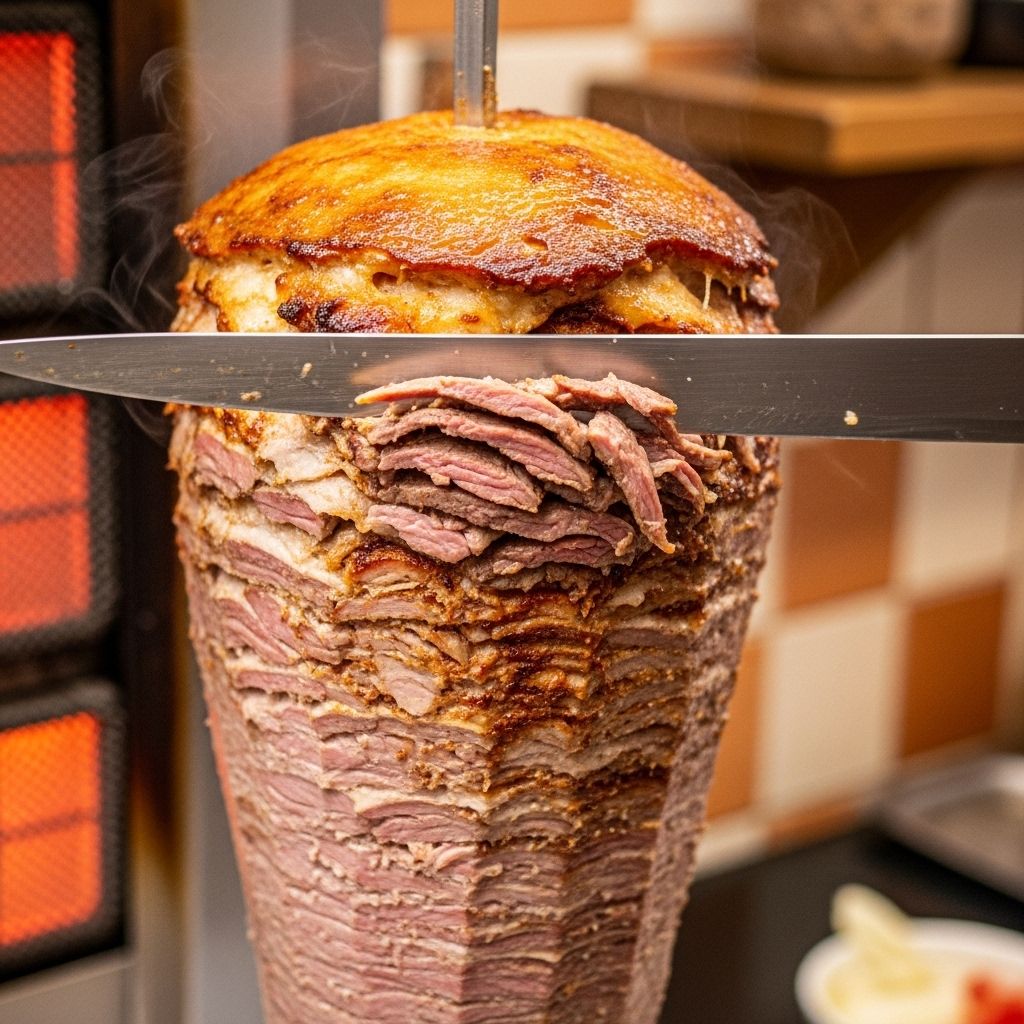
Image: HearthJunction Design Team
Traditional Gyro Meat: An Authentic Greek Delight You Can Make at Home
If you love Greek cuisine, you have likely savored the irresistible flavor of gyros—a Mediterranean street food classic featuring savory, aromatic meat, fresh vegetables, and creamy sauces, all wrapped in warm pita bread. The heart of this dish is the gyro meat itself, traditionally cooked on a vertical rotisserie but easily replicated at home with a few simple techniques and the right blend of herbs and spices. This guide will walk you through everything you need to know to make traditional gyro meat from scratch, including ingredients, preparation methods, seasoning secrets, and serving suggestions.
What Is Gyro Meat?
Gyro meat is a staple of Greek cuisine, renowned for its unique combination of flavors and textures. Unlike some other Mediterranean meats, such as shawarma or doner kebab, gyro meat is typically crafted using a blend of ground lamb and beef, combined with onions and a variety of dried herbs and spices. This mixture is finely processed and pressed to create a dense, sliceable loaf, which can be cooked at home in the oven to achieve results reminiscent of the rotisserie-cooked versions found in Greek eateries.
Ingredients for Traditional Gyro Meat
The authenticity and robust flavor of gyro meat stem from a carefully selected list of ingredients. Here’s what you’ll need to prepare traditional gyro meat at home:
- 1 medium onion, cut into chunks
- 1 pound ground lamb
- 1 pound 80/20 ground beef (20% fat for juiciness)
- 1 tablespoon minced garlic
- 1 teaspoon dried oregano
- 1 teaspoon ground cumin
- 1 teaspoon dried marjoram
- 1 teaspoon dried thyme
- 1 teaspoon dried rosemary
- 1 teaspoon ground black pepper
- 1/4 teaspoon fine sea salt
These ingredients, when combined, result in a meat mixture that is moist, tender, and packed with the aromatic flavors synonymous with classic Greek gyros.
Gyro Meat Seasoning Secrets
The signature taste of gyro meat relies on a balance of Mediterranean herbs and spices. Here’s a closer look at what each seasoning brings to the dish:
- Oregano and marjoram: Infuse the meat with classic Greek herbal notes.
- Cumin: Adds earthiness and depth to the flavor profile.
- Thyme and rosemary: Impart a warm, woodsy aroma.
- Black pepper and sea salt: Enhance all other seasonings and lock in savory undertones.
Minced garlic rounds out the spice blend, providing a pungent and slightly sweet background flavor that is essential for any authentic gyro meat.
How to Make Gyro Meat at Home
With the ingredients and seasonings gathered, it’s time to create your traditional gyro meat. The following steps will walk you through the process, mirroring tried and tested methods for best results:
- Process the Onion: Place the onion chunks in a food processor and pulse until finely chopped. Transfer the chopped onion to a clean kitchen towel or cheesecloth, wrap it up, and squeeze firmly to remove excess moisture. This critical step ensures your meat mixture won’t be watery.
- Combine Meat and Seasonings: In a large mixing bowl, add the drained onion, ground lamb, ground beef, minced garlic, and all dried herbs and spices. Using your hands, vigorously mix the ingredients together until well combined. The mixture should become slightly sticky and uniform, which promotes the traditional gyro texture.
- Chill the Mixture: Cover the bowl with plastic wrap and refrigerate for at least two hours. This chilling period allows the flavors to blend and the fat to firm up, leading to a better final texture.
- Puree the Meat: Transfer the chilled meat mixture to a food processor in batches and pulse until the mixture becomes finely chopped and tacky. This fine processing is crucial—it enables the meat to compact into a dense loaf that slices cleanly, resembling the consistency of restaurant-style gyros.
- Form the Loaf: Preheat your oven to 325°F (165°C). Pack the processed meat mixture tightly into a 7×4-inch loaf pan, pressing it down to eliminate any air pockets. The tightly packed loaf is key for creating uniform slices later.
- Bake in a Water Bath: To bake the loaf gently, set the loaf pan inside a larger roasting pan lined with a damp kitchen towel. Pour enough boiling water into the roasting pan to come halfway up the sides of the loaf pan. This water bath, or bain-marie, ensures even cooking and keeps the meat moist.
- Bake Until Done: Place the setup in the oven and bake for 45 to 60 minutes, or until an instant-read thermometer inserted into the center registers at least 165°F (74°C). Once cooked, carefully remove the loaf pan, drain any accumulated fat, and let the meat cool for a few minutes before slicing thinly.
With these steps, you’ll have homemade gyro meat that’s flavorful, tender, and perfect for sandwiches, platters, and more.
Serving Suggestions: Building the Perfect Gyro
No gyro is complete without the classic accompaniments. Here’s how to assemble the ultimate Greek gyro at home:
- Pita Bread: Warm, soft pita rounds form the perfect base for your gyro meat slices.
- Tzatziki Sauce: This creamy cucumber-yogurt sauce adds coolness and tang—an essential counterpoint to the savory meat.
- Fresh Vegetables: Common choices include shredded lettuce, sliced tomatoes, and sliced red onions.
- Cheese: Crumbled feta is a classic topping, adding a briny, tangy note.
- Hummus (optional): For extra richness and flavor, a swipe of hummus can be added to the pita before layering in the meat and veggies.
Simply layer the gyro meat slices over the warmed pita, drizzle with tzatziki and hummus, then add your chosen veggies and a sprinkle of feta. Fold the pita to wrap everything together and enjoy the taste of Greece at home.
Nutritional Profile and Tips for Healthier Gyro Meat
Gyro meat, when made with a blend of lamb and beef, is rich in protein and provides a hearty dose of essential minerals such as iron and zinc. The inclusion of herbs not only enhances flavor but also brings antioxidant benefits. For a lighter option, consider using leaner beef or substituting ground chicken or turkey for part or all of the meat; just be aware this may alter the traditional flavor and texture.
Tips for a Healthier Gyro:
- Use leaner cuts of meat for less fat.
- Serve with whole wheat pita for added fiber.
- Include extra fresh vegetables for more vitamins.
- Opt for light or nonfat Greek yogurt in tzatziki sauce.
Storage and Make-Ahead Suggestions
Gyro meat keeps well and can be prepared in advance:
- Refrigeration: Store leftover gyro meat in an airtight container in the refrigerator for up to 4 days. Reheat gently in a skillet or microwave.
- Freezing: Slice the cooked loaf and separate layers with parchment paper before freezing in a zip-top bag. Thaw in the refrigerator before reheating and serving.
- Meal Prep: The loaf can be made up to 2 days ahead and stored, unbaked, in the refrigerator. Bake just before serving for maximum freshness.
Frequently Asked Questions (FAQs)
What meats are traditionally used for gyro?
Authentic Greek gyros are typically made with a blend of ground lamb and beef, chosen for their flavorful profiles and ability to bind together when finely processed and baked. Some variations use just lamb or substitute pork or chicken, but lamb-beef blends remain most popular for traditional recipes.
Can I make gyro meat without a food processor?
While a food processor is highly recommended for achieving the signature fine texture and density of gyro meat, you can still mix the ingredients by hand and press them tightly into the loaf pan. The resulting loaf may be less compact and slice slightly less smoothly, but the flavor will remain delicious.
How do I prevent my gyro meat from being too dry?
The key to moist gyro meat is using ground meats with adequate fat (such as 80/20 beef), not overpacking the loaf pan, and cooking the loaf gently in a water bath. Removing excess onion moisture and chilling the mixture before baking also help lock in juiciness.
What can I use instead of lamb?
If you prefer not to use lamb, substitute with all beef, or try ground pork, chicken, or turkey. Each will bring slightly different flavors and textures, but all can produce a tasty, gyro-inspired dish.
Can I cook the gyro meat on a grill?
While the traditional loaf technique is best for replicating the texture of restaurant gyros, you can shape the seasoned meat into patties or logs and grill them. The smoky flavor from grilling adds a new dimension, though the classic dense texture will differ.
Table: Quick Reference for Ingredient Proportions
| Ingredient | Amount |
|---|---|
| Ground Lamb | 1 lb (450 g) |
| Ground Beef (80/20) | 1 lb (450 g) |
| Onion | 1 medium, chopped |
| Minced Garlic | 1 tbsp |
| Dried Oregano, Cumin, Marjoram, Thyme, Rosemary | 1 tsp each |
| Black Pepper | 1 tsp |
| Fine Sea Salt | 1/4 tsp |
Expert Tips for the Best Homemade Gyro Meat
- Process the meat mixture long enough for a tacky texture—this is essential for signature gyro loaf consistency.
- Don’t skip the water bath; it keeps the loaf tender and prevents over-browning.
- Thin slices yield the best texture in your finished gyro—use a sharp knife and slice against the grain.
- Pair with authentic sides like Greek salad, lemon potatoes, or roasted vegetables for a complete meal.
Conclusion
Traditional gyro meat is a culinary journey to Greece—savory, aromatic, and deeply satisfying. With the right techniques and classic seasonings, you can craft this iconic dish in your own kitchen, impressing family and friends with your homemade gyros. Whether you load it into a pita with all the fixings or serve it alongside classic Mediterranean sides, this recipe is certain to become a favorite in your repertoire. For additional inspiration, experiment with different meats, toppings, and sauces—the possibilities are as endless as they are delicious.
References
Read full bio of medha deb




